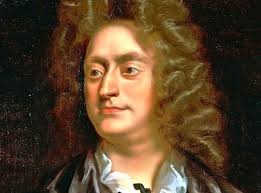
In this post we’re dealing with two real heavyweights in the world of music and worship: John Mason Neale and Henry Purcell – whose talents are uniquely combined in the hymn ‘Christ is made the sure foundation’, to the tune WESTMINSTER ABBEY.
John Mason Neale (1818-66) was educated at Sherborne School and Trinity College, Cambridge, where he aligned himself with the Oxford Movement and formed the Camden Society, encouraging more Catholic practices within Anglican worship. He became vicar of Crawley, West Sussex, in 1841, but his career as a clergyman was constantly marred by those opposed to his high church principles. His bishop forced Neale out in 1846 and he became Warden of Sackville College, an East Grinstead almshouse. He continued to be dogged by allegations of Catholic sympathy, and was more than once physically assaulted for it. Yet his relatively quiet life at Sackville College allowed him to indulge in private study, and the writing of several well-known translations of Latin and Greek devotional texts. Many of these fill our Christmas repertoire: ‘Good King Wenceslas’, ‘O come, O come Emmanuel’ and ‘Of the Father’s heart begotten’ are notable examples. This hymn, from the 7th century Latin text Angularis fundamentum, first appeared in 1851 and is equally suited to Christian festivals such as All Saints and Pentecost as it is to a service of dedication.
Henry Purcell (1659-95) has been the subject of thousands of words penned by those a thousand times more erudite than this writer. Suffice to say he is regarded as the most important English composer (before Elgar comes along, at least) and architect of a uniquely British form of the baroque style of music. He wrote both secular and spiritual pieces, but not hymn tunes, as such: others after him have reworked several of his motifs and sequences to fit hymns of standard metre. In the case of WESTMINSTER ABBEY, Rev. Ernest Hawkins took the final ‘Alleluia’ section of Purcell’s anthem ‘O God, thou are my God’ (c.1692) and formed it into this discrete tune, which first appeared in 1843. A decade later, Neale’s translation was published and the two slowly merged in the public consciousness – its main contender for the pairing being Henry Smart’s tune REGENT SQUARE, which still persists with some congregations. It wasn’t until 1960, when Princess Margaret chose Neale’s text and Purcell’s tune for her wedding at Westminster Abbey – the first such royal wedding to be televised – that a strong union was forged (the most enduring thing, sadly, to come out of that ceremony).
Rob Charles takes us through the stops at All Saints, Oystermouth:
https://www.youtube.com/watch?v=rMYLGoTvRRM
The version sung in Westminster Abbey during Pope Benedict XVI’s visit to the UK in 2010:
https://www.youtube.com/watch?v=cR9NHXnbxlU
As ever, this post’s descant it’s free to download and use, so please do so, and let us know how you get on. And we’d be delighted to receive any audio or video of your attempts.
If you’re using John Mason Neale’s hymn in a lesson, try considering the following points:
- The life and career of the author.
- The ideas of foundation, benediction, and salvation to be found within the text.
- The use of the imagery of Zion (Jerusalem) in the text, and a comparison with uses in other hymns (see below).
- The uncommon yet regular metre of the text (87.87.87.), how this reinforces the structure, and the suitability of the music in reflecting this.
- A comparison to other hymns with similar themes, such as ‘Christ is our corner-stone’ (John Chandler), ‘The Church’s one foundation’ (Samuel Stone), or ‘Glorious things of thee are spoken’ (John Newton).
Is this hymn a worthy addition to the hymnal, or a young usurper of more successful, earlier texts? As ever, do let us know your thoughts in the comments section below.

